
Best HVAC Systems of 2025: Compare Brands, Costs, and Efficiency
The top HVAC systems of 2025 deliver exceptional energy efficiency, advanced smart features, and reliable performance, with industry leaders like Carrier, Trane, and Lennox setting the standard. As an experienced home flipper with extensive hands-on experience installing HVAC systems, I’m here to help you choose the ideal system for your home. Whether you need to stay cool during summer’s heat or keep warm through winter’s chill, I’ll guide you every step of the way.
| HVAC Brand | Estimated Cost -w/Installation | SEER2 Rating* |
|---|---|---|
| Amana HVAC Units | $2,856 – $7,650 | Up to 22.5 |
| American Standard HVAC Units | $3,570 – $8,160 | Up to 21.5 |
| Bryant HVAC Units | $2,346 – $7,140 | Up to 24.0 |
| Carrier HVAC Units | $3,060 – $15,300 | Up to 24.0 |
| Goodman HVAC Units | $3,264 – $6,630 | Up to 24.5 |
| Heil HVAC Units | $3,060 – $9,180+ | Up to 19.0 |
| Lennox HVAC Units | $3,570 – $10,200 | Up to 25.8 |
| Rheem HVAC Units | $3,060 – $8,670 | Up to 20.5 |
| Ruud HVAC Units | $3,060 – $8,670 | Up to 20.5 |
| Trane HVAC Units | $5,100 – $25,500 | Up to 21.5 |
| York HVAC Units | $3,468 – $10,710 | Up to 20.0 |
Top HVAC Brands of 2025
When it comes to HVAC systems, not all brands are created equal. After years of experience and countless installations, I’ve narrowed down the top performers that consistently deliver comfort, efficiency, and reliability. Here’s the cream of the crop for 2025:
A. Carrier
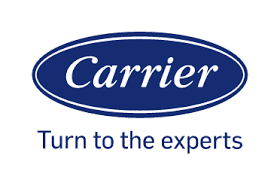
Carrier has been a household name in HVAC for over a century, and for good reason. Their systems are like the Swiss Army knives of climate control – versatile, reliable, and packed with features.
Key Features:
• Excellent energy efficiency with SEER ratings up to 26
• Greenspeed Intelligence for precise temperature control
• Quiet operation (as low as 51 decibels – that’s quieter than a conversation!)
My Take: I’ve installed Carrier systems in high-end flips, and the new owners always rave about the comfort and low energy bills. It’s a premium brand with a price to match, but you get what you pay for.
Help Me Save on HVACB. Trane
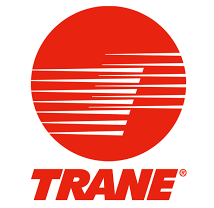
Trane is the workhorse of HVAC brands. These systems are built like tanks and keep on running even in the toughest conditions.
Key Features:
• Climatuff compressor for long-lasting performance
• CleanEffects air filtration system for improved air quality
• ComfortLink II for smart home integration
My Take: I once installed a Trane system in a flip house located in a harsh climate. Three years later, the new owners told me it was still running as smoothly as day one. If reliability is your top priority, Trane is hard to beat.
Help Me Save on HVACC. Lennox
Lennox is the efficiency champion. If you’re looking to slash those energy bills, this brand should be at the top of your list.
Key Features:
• Industry-leading efficiency with SEER ratings up to 28
• SilentComfort technology for whisper-quiet operation
• iComfort smart thermostat for precision control
My Take: I’ve used Lennox systems in eco-friendly home renovations. The energy savings are impressive, and environmentally conscious buyers love the reduced carbon footprint.
COMPARE QUOTESD. American Standard
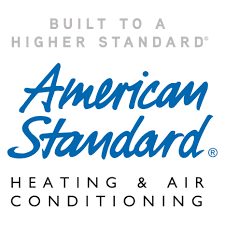
American Standard is like the dependable friend of HVAC brands – always there when you need it, no fuss, no muss.
Key Features:
• AccuComfort technology for consistent temperatures
• Durable construction with fewer breakdowns
• Good balance of efficiency and affordability
My Take: American Standard is my go-to for mid-range flips. It offers solid performance without breaking the bank, which is great for maximizing ROI.
Help Me Save on HVACE. Rheem
Rheem is the up-and-comer in the HVAC world, offering innovative features at competitive prices.
Key Features:
• EcoNet smart monitoring for enhanced performance
• Excellent humidity control
• Good energy efficiency at a lower price point
My Take: I’ve been impressed with Rheem’s innovation in recent years. It’s a great option if you want modern features without the premium price tag of some other brands.
COMPARE QUOTESNow that we’ve covered the top brands, you might be wondering, “Which HVAC brand is truly the best?” The truth is, the best brand for you depends on your specific needs, budget, and local climate. In the next section, we’ll explore the different types of HVAC systems to help you understand which might be the perfect fit for your home.

Types of HVAC Systems
Heating, Ventilation, and Air Conditioning (HVAC) systems play a crucial role in maintaining indoor comfort. Choosing the right HVAC system can be challenging, as there are various types tailored to different needs, climates, and budgets. Below, we explore the main types of HVAC systems (you can get from Lowes), highlighting their pros, cons, and rough costs for installation and units.
1. Split System
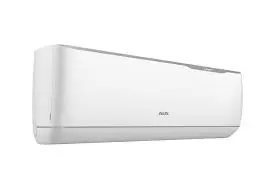 A split HVAC system is the most common type for residential use. It consists of an outdoor unit (housing the compressor and condenser) and an indoor unit (containing the air handler and evaporator coil).
A split HVAC system is the most common type for residential use. It consists of an outdoor unit (housing the compressor and condenser) and an indoor unit (containing the air handler and evaporator coil).
Pros:
- Cost-effective for most homeowners.
- Provides both heating and cooling.
- Energy-efficient options available.
Cons:
- Requires ductwork, which can increase costs for homes without pre-installed ducts.
- Installation can be complex.
Cost:
- Unit: $3,000 to $7,000.
- Installation: $2,000 to $5,000.
2. Packaged System
Packaged systems house all components (compressor, condenser, and evaporator) in a single unit, typically installed on a roof or a concrete slab next to the building.
Pros:
- Ideal for homes with limited indoor space.
- Easier to install than split systems.
Cons:
- Less energy-efficient than split systems.
- Maintenance can be more challenging due to outdoor exposure.
Cost:
- Unit: $4,000 to $8,000.
- Installation: $2,500 to $6,000.
3. Ductless Mini-Split System
 Ductless mini-splits consist of an outdoor unit and one or more indoor air handlers. They are commonly used in homes without ductwork or for supplemental heating and cooling.
Ductless mini-splits consist of an outdoor unit and one or more indoor air handlers. They are commonly used in homes without ductwork or for supplemental heating and cooling.
Pros:
- No need for ductwork, making installation easier.
- Zoning capabilities allow temperature control for individual rooms.
- Highly energy-efficient.
Cons:
- Higher upfront cost per unit.
- May not be sufficient for whole-home heating and cooling in larger homes.
Cost:
- Unit: $2,000 to $5,000 per zone.
- Installation: $1,000 to $3,000 per zone.
4. Heat Pumps
 Heat pumps transfer heat rather than generating it, providing both heating and cooling. They are particularly efficient in moderate climates.
Heat pumps transfer heat rather than generating it, providing both heating and cooling. They are particularly efficient in moderate climates.
Pros:
- Energy-efficient, reducing utility bills.
- Dual functionality for heating and cooling.
Cons:
- Less effective in extremely cold climates unless paired with a supplemental heating source.
- Higher initial investment.
Cost:
- Unit: $3,500 to $10,000.
- Installation: $2,500 to $6,000.
5. Geothermal Heat Pumps
Geothermal systems use the earth’s stable underground temperatures for heating and cooling. This involves underground piping filled with water or refrigerant.
Pros:
- Extremely energy-efficient.
- Environmentally friendly with long-term cost savings.
- Long lifespan of components.
Cons:
- Very high upfront costs.
- Complex and time-consuming installation.
Cost:
- Unit and Installation: $15,000 to $35,000.
6. Hybrid Systems
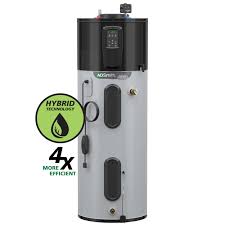
Hybrid HVAC Systems
Hybrid systems combine a heat pump with a furnace, allowing the system to switch between electricity and gas depending on efficiency and cost.
Pros:
- Highly energy-efficient.
- Versatile in handling varying temperature conditions.
Cons:
- Higher upfront cost compared to traditional systems.
- Maintenance involves two components (heat pump and furnace).
Cost:
- Unit: $6,000 to $10,000.
- Installation: $3,000 to $7,000.
7. Boilers
 Boilers provide radiant heat by heating water or steam and distributing it through radiators or underfloor piping.
Boilers provide radiant heat by heating water or steam and distributing it through radiators or underfloor piping.
Pros:
- Offers consistent, comfortable heat.
- Quiet operation.
- Can last longer than forced-air systems.
Cons:
- Cannot provide cooling.
- Expensive installation and potential for leaks.
Cost:
- Unit: $3,000 to $7,000.
- Installation: $3,500 to $10,000.
8. Window and Portable Units
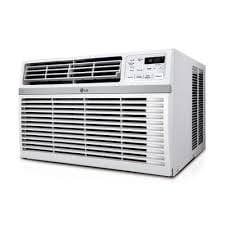 Window and portable units are standalone systems primarily used for cooling a single room. Some models include heating options.
Window and portable units are standalone systems primarily used for cooling a single room. Some models include heating options.
Pros:
- Affordable upfront cost.
- Easy to install and move.
Cons:
- Limited to small spaces.
- Less energy-efficient than central systems.
Cost:
- Unit: $150 to $1,000.
- Installation: DIY or minimal professional cost.
9. Central Air Conditioning Systems
 Central AC systems use a network of ducts to cool the entire home, paired with a furnace or heat pump for heating.
Central AC systems use a network of ducts to cool the entire home, paired with a furnace or heat pump for heating.
Pros:
- Effective for whole-home cooling.
- Compatible with programmable thermostats for efficiency.
Cons:
- Requires ductwork.
- Higher energy consumption compared to ductless options.
Cost:
- Unit: $3,000 to $8,000.
- Installation: $2,000 to $5,000.
Selecting the right HVAC system depends on your specific needs, budget, and climate. While some systems, like geothermal heat pumps, offer long-term savings, their initial costs might be prohibitive. Conversely, ductless mini-splits and heat pumps are excellent options for energy efficiency and versatility. Assess your requirements carefully and consult with HVAC professionals to ensure an informed decision.
COMPARE QUOTESUnderstanding HVAC Efficiency
When it comes to HVAC systems, efficiency isn’t just a trendy term—it’s what separates manageable energy bills from ones that make you consider sweating through summer to save money. Having reviewed countless energy bills before and after HVAC upgrades, I can tell you that knowing how efficiency ratings work is essential to making an informed decision. Here’s a breakdown:
A. SEER Ratings (Cooling Efficiency)
SEER stands for Seasonal Energy Efficiency Ratio, which is essentially the MPG (miles per gallon) for your air conditioning system.
What It Means:
- Measures cooling efficiency
- A higher SEER = more efficient performance
- Calculated by dividing total cooling output over a season by the energy consumed
Current Standards:
- Minimum SEER: 13 in northern states, 14 in southern states
- Top-of-the-line systems can reach up to 26 SEER
My Take:
In my home renovation projects, I rarely go below 16 SEER. The sweet spot for most homeowners lies between 16 and 20 SEER, offering the right balance of efficiency and cost.
B. AFUE for Heating Systems
AFUE stands for Annual Fuel Utilization Efficiency—the heating equivalent of SEER for systems that use fuel.
What It Means:
- Measures heating efficiency for gas and oil furnaces
- Represented as a percentage (higher percentages indicate better efficiency)
Current Standards:
- Minimum AFUE: 80% for gas furnaces, 75% for oil furnaces
- High-efficiency models range from 90% to 98% AFUE
My Take:
When replacing a furnace, I aim for at least 90% AFUE. The savings on fuel costs between an 80% and 95% AFUE furnace can add up significantly over time.
C. HSPF for Heat Pumps
HSPF, or Heating Seasonal Performance Factor, is the heating equivalent of SEER for heat pumps.
What It Means:
- Measures heating efficiency for heat pumps
- A higher HSPF means better heating performance with less energy use
Current Standards:
- Minimum HSPF: 7.7 for split systems, 7.4 for packaged systems
- High-efficiency models can reach up to 13 HSPF
My Take:
For most climates, I recommend a heat pump with at least 9 HSPF. In colder regions, going for 10+ HSPF can lead to noticeable savings on winter heating costs.
Take Away:
Understanding these efficiency metrics—SEER, AFUE, and HSPF—can help you make the best decision for your home’s HVAC needs. Prioritizing higher efficiency may cost more upfront, but it pays off through lower energy bills and a more comfortable home.
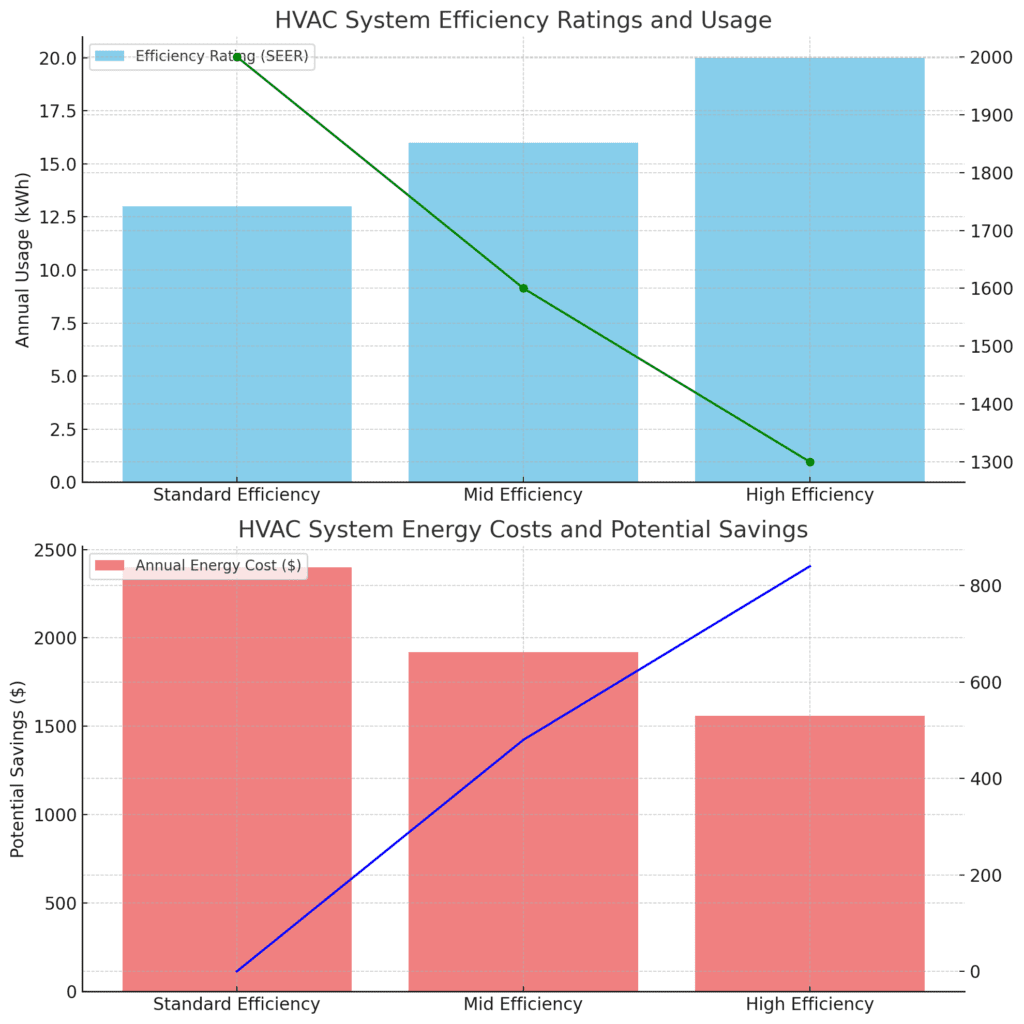
“But how much difference does efficiency really make?” you might ask. Let me tell you, it’s huge. I once replaced an old 10 SEER AC unit with a 20 SEER system in a flip house. The new owners reported their summer cooling costs were cut almost in half!
Understanding these ratings is crucial, but it’s just one piece of the puzzle. In the next section, we’ll look at all the factors you need to consider when choosing your HVAC system. After all, the most efficient system in the world won’t do you much good if it’s not the right fit for your home.
COMPARE QUOTESFactors to Consider When Choosing an HVAC System
Choosing the Right HVAC System: Key Factors
Choosing an HVAC system isn’t just about picking the most efficient or cheapest option. It’s about finding the Goldilocks zone—the system that’s just right for your specific needs. Here’s what I always consider:
| Factor | Details | Pro Tips & My Approach |
|---|---|---|
| A. Home Size and Layout | Why it matters: A system that’s too small won’t keep up, while one that’s too large wastes energy and wears out faster. | – For every 400–600 sq. ft., you generally need 1 ton of AC capacity. Always get a professional assessment for accuracy. |
| Key Considerations: – Square footage – Ceiling height – Number of floors – Open floor plan vs. many small rooms |
||
| B. Climate Considerations | Why it matters: Your local climate affects which system works best. A system for Miami won’t work as well in Minneapolis. | – In hot, humid climates, choose systems with good dehumidification. – For harsh winters, focus on high heating efficiency. |
| Factors to Consider: – Average summer/winter temperatures – Humidity levels – Extreme weather events |
||
| C. Energy Efficiency Goals | Why it matters: Balancing upfront costs with long-term savings is key. Energy-efficient systems reduce bills but cost more initially. | – Consider SEER, AFUE, and HSPF ratings along with your long-term plans. – Look for tax credits or rebates for high-efficiency systems. |
| Consider: – Utility budget – Environmental concerns – Local energy costs – Available tax credits/rebates |
||
| D. Budget (Initial Cost vs. Long-term Savings) | Why it matters: HVAC systems are a major investment, so it’s crucial to weigh purchase costs against potential savings. | – I compare at least 3 options: budget, mid-range, and high-efficiency to find the best balance for each project. |
| Factors to Weigh: – Purchase and installation costs – Annual operating costs – System lifespan – Potential energy savings |
||
| E. Smart Home Integration | Why it matters: Smart features offer convenience, comfort, and extra savings. | – Look for Wi-Fi-enabled thermostats and voice assistant compatibility. – Smart systems can save 10-15% on energy bills. |
| Features to Look For: – Zoning capabilities – Energy usage tracking – Compatibility with Alexa, Google Home, etc. |
||
| F. Indoor Air Quality | Why it matters: Especially in well-sealed, energy-efficient homes, indoor air quality plays a huge role in comfort and health. | – Look for systems with advanced filtration. – Consider UV light purifiers or whole-home dehumidifiers for improved air quality. |
Choosing the right HVAC system is a big decision, but you’re not in this alone. In the next section, we’ll cover installation and maintenance tips, including when to call in the pros and how to keep your system running efficiently for years to come.
Cost Breakdown
When it comes to HVAC systems, the old saying “you get what you pay for” often holds true. However, that doesn’t mean you need to break the bank to get a quality system. Let’s break down the costs so you can make an informed decision that balances your comfort needs with your budget.
A. Average Costs by System Type
Different HVAC systems come with varying price tags. Here’s a general overview of what you might expect to pay:
1. Central Air Conditioning:
• Cost range: $3,000 – $7,000
• Factors affecting cost: Home size, SEER rating, brand
2. Heat Pumps:
• Cost range: $4,000 – $8,000
• Factors affecting cost: Type (air-source vs. ground-source), efficiency rating
3. Ductless Mini-Split Systems:
• Cost range: $2,000 – $14,000
• Factors affecting cost: Number of zones, BTU capacity
4. Geothermal Systems:
• Cost range: $10,000 – $30,000
• Factors affecting cost: Loop type, home size, soil conditions
Pro Tip: Remember, these are just average ranges. The actual cost can vary based on your specific needs, location, and the complexity of the installation.
B. Installation Costs
The cost of installation can sometimes equal or exceed the cost of the unit itself. Here’s what you need to know:
• Average installation cost: 40-50% of the total project cost
• Factors affecting installation cost:
– Complexity of the job (e.g., retrofitting vs. new construction)
– Accessibility of the installation area
– Need for additional work (e.g., ductwork repair or replacement)
– Local labor rates
My Experience: In one flip, I had to replace the entire ductwork system along with the HVAC unit. The installation cost ended up being about 60% of the total project cost. But the improved efficiency made it worthwhile in the long run.
C. Operating Costs and Energy Savings
The true cost of an HVAC system extends beyond the initial purchase and installation. Here’s how to think about long-term costs:
1. Annual Operating Costs:
• Average range: $500 – $1,500 per year
• Varies based on: System efficiency, local energy rates, climate, home size
2. Potential Energy Savings:
• Upgrading from SEER 10 to SEER 16: Up to 20-40% energy savings
• Switching to a heat pump in a moderate climate: Up to 50% savings on heating costs
3. Smart Thermostat Savings:
• Potential savings: 10-15% on heating and cooling costs
• Cost of smart thermostats: $100 – $300
Real-World Example: In a recent flip, I upgraded from an old 10 SEER AC unit to a 20 SEER heat pump system. The initial cost was about $3,000 more, but the new owners reported saving around $550 per year on energy bills. That’s a payback period of less than 6 years!
D. Return on Investment (ROI)
When considering HVAC costs, it’s crucial to think about the return on your investment:
• Energy Efficient Systems: Often pay for themselves in 5-10 years through energy savings
• Proper Maintenance: Can extend system life by 5-10 years, improving overall ROI
• Home Value: A new, efficient HVAC system can increase home value by 5-10%
Pro Tip: If you’re planning to sell your home in the next few years, a new HVAC system can be a major selling point. I’ve seen homes with new, high-efficiency systems sell faster and for higher prices than comparable homes with older systems.
“But what about rebates and incentives?” you might ask. Great question! There are often ways to offset the initial costs of high-efficiency HVAC systems. In our next section, we’ll explore the various rebates and incentives available that can make upgrading your HVAC system more affordable than you might think.
Help Me Save on HVACRebates and Incentives
One of the best-kept secrets in the HVAC world is the abundance of rebates and incentives available. These can significantly reduce the upfront cost of a new, high-efficiency system. As someone who’s always looking to maximize value in home improvements, I make sure to take full advantage of these offers. Let’s break them down:
A. Federal Tax Credits
The federal government offers tax credits to encourage homeowners to invest in energy-efficient HVAC systems.
Key points:
• Available for qualified high-efficiency heating and cooling equipment
• Can cover up to 30% of the cost, with a maximum of $600 for air conditioners and heat pumps
• Additional credits available for certain heat pump installations
Pro Tip: Always check the Energy Star website for the most up-to-date information on federal tax credits. These can change from year to year, so staying informed is crucial.
B. State and Local Incentives
Many states and local governments offer their own incentives on top of federal programs. These can vary widely depending on your location.
Examples:
• Cash rebates for installing high-efficiency systems
• Property tax exemptions for energy-efficient home improvements
• Low-interest loans for energy-saving upgrades
My Experience: In a recent flip in California, I was able to secure a $1,500 rebate from the state for installing a high-efficiency heat pump system. This, combined with the federal tax credit, significantly offset the initial cost.
C. Utility Company Programs
Don’t overlook your local utility companies! Many offer rebates and incentives to encourage energy-efficient upgrades.
Common offerings:
• Rebates for installing Energy Star certified equipment
• Discounts on smart thermostats
• Free or discounted home energy audits
Pro Tip: Some utility companies offer peak-time savings programs. By allowing your utility to slightly adjust your thermostat during high-demand periods, you can earn additional rebates or credits on your bill.
D. Manufacturer Rebates
HVAC manufacturers often run their own rebate programs, especially during off-peak seasons.
Tips for maximizing manufacturer rebates:
• Look for seasonal promotions (often in spring and fall)
• Check multiple brands – rebates can vary significantly
• Consider bundling multiple components (e.g., AC unit + furnace) for bigger savings
Real-World Example: Last year, I installed a complete Carrier system in a flip house. By timing the purchase during their spring promotion and bundling the AC, furnace, and smart thermostat, I was able to secure a $1,200 rebate from Carrier. This was on top of the federal and state incentives!
E. How to Claim Your Rebates and Incentives
Navigating the world of HVAC rebates and incentives can be tricky. Here’s a step-by-step guide to make sure you don’t leave money on the table:
1. Research available offers before purchase
2. Ensure your chosen system qualifies for the rebates
3. Keep all receipts and documentation
4. Fill out rebate forms accurately and completely
5. Submit claims within the specified timeframe
6. Follow up if you don’t receive your rebate in the expected time
Pro Tip: Many HVAC contractors are well-versed in local rebate programs and can help you with the paperwork. Always ask your installer about available rebates and if they assist with the claim process.
“This all sounds great,” you might be thinking, “but how do I know which system is truly right for my home?” That’s where expert insights come in handy. In our next section, we’ll hear from HVAC professionals and energy efficiency experts who can provide valuable perspectives on choosing and maintaining your HVAC system. Their real-world experience and insider knowledge can help you make the best decision for your home.
Frequently Asked Questions
As someone who’s fielded countless questions from homeowners and buyers over the years, I’ve compiled the most common and crucial questions about HVAC systems. Let’s dive in and clear up any lingering doubts you might have.
Q1: What size HVAC system do I need for my home?
A: The size of your HVAC system depends on several factors:
• Square footage of your home
• Ceiling height
• Insulation quality
• Number and size of windows
• Local climate
Pro Tip: A general rule of thumb is 20 BTUs per square foot, but this can vary. Always get a professional to perform a Manual J load calculation for accurate sizing.
Q2: How often should I replace my HVAC system?
A: On average, HVAC systems last:
• Air Conditioners: 15-20 years
• Furnaces: 15-30 years
• Heat Pumps: 10-20 years
However, if your system is over 10 years old and requiring frequent repairs, it might be more cost-effective to replace it with a more efficient model.
Q3: How can I improve my HVAC system’s efficiency?
A: Here are some key ways to boost efficiency:
1. Regular maintenance (annual professional tune-ups)
2. Change air filters monthly
3. Use a programmable or smart thermostat
4. Seal air leaks in your home
5. Improve insulation
6. Keep outdoor units clear of debris
Q4: What’s the difference between SEER and EER ratings?
A:
• SEER (Seasonal Energy Efficiency Ratio): Measures cooling efficiency over an entire season.
• EER (Energy Efficiency Ratio): Measures cooling efficiency at a specific outdoor temperature (usually 95°F).
Generally, SEER gives a better idea of overall efficiency in varying conditions.
Q5: Are ductless mini-split systems effective for whole-home heating and cooling?
A: Yes, multi-zone mini-split systems can effectively heat and cool an entire home. They’re especially good for:
• Homes without existing ductwork
• Additions or renovations
• Homes with varying temperature needs in different rooms
My Experience: I’ve installed mini-splits in several whole-home renovations with great success, especially in older homes where adding ductwork would be invasive and expensive.
Q6: How much can I expect to save on energy bills with a high-efficiency system?
A: Savings can vary, but as a general guide:
• Upgrading from SEER 10 to SEER 16: Up to 20-40% savings on cooling costs
• Switching to a high-efficiency heat pump: Up to 50% savings on heating costs in moderate climates
Remember, actual savings depend on your usage patterns, local energy rates, and climate.
Q7: Is it worth paying extra for a variable-speed HVAC system?
A: In most cases, yes. Variable-speed systems offer:
• Better temperature control
• Improved energy efficiency
• Quieter operation
• Enhanced humidity control
While they cost more upfront, the comfort and efficiency gains often justify the investment.
Q8: How do I know if my HVAC system is the right size?
A: Signs of an improperly sized system include:
• Short cycling (turning on and off frequently)
• Inconsistent temperatures throughout your home
• High energy bills
• Excessive humidity (oversized AC) or dry air (undersized AC)
If you suspect your system is improperly sized, have a professional perform a load calculation.
Q9: Can I install an HVAC system myself to save money?
A: I strongly advise against DIY HVAC installation. Proper installation requires:
• Specialized tools and knowledge
• Understanding of local codes and regulations
• Proper handling of refrigerants (which is regulated)
• Electrical and plumbing expertise
Improper installation can lead to inefficiency, frequent breakdowns, and even safety hazards. Always hire a licensed professional.
Q10: How do smart HVAC systems work, and are they worth it?
A: Smart HVAC systems typically include:
• Wi-Fi enabled thermostats
• Learning capabilities to adjust to your schedule
• Remote control via smartphone apps
• Integration with home automation systems
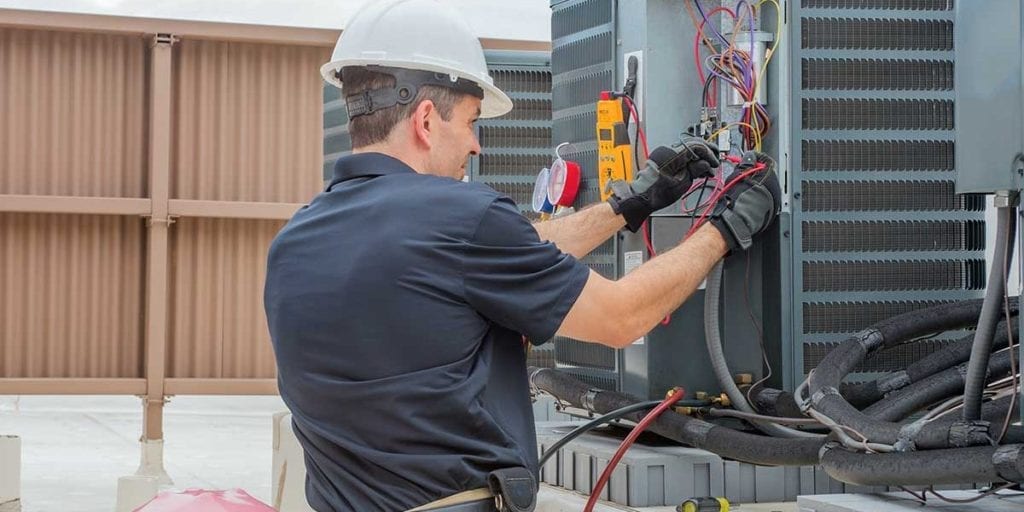
Leave a Reply